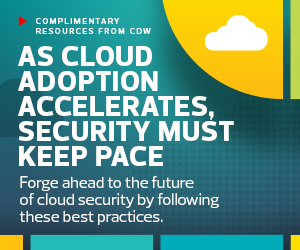Make Use of Cybersecurity Threat Feeds
With threat detection, it’s important to keep your ear to the ground to know what’s coming, and publicly accessible threat feeds offer a way to do just that. Many of these feeds — such as the Cybersecurity and Infrastructure Security Agency’s Automated Indicator Sharing network, a program of the Department of Homeland Security — are accessible to businesses as a way to understand potential risks. The AIS network is also available through information sharing and analysis centers (ISACs), which provide targeted information on threats to specific industries, as well as a way to privately share information about emerging threats.
The National Council of ISACs offers a starting point for specific fields; for those interested in signing up for more general feeds, the Center for Internet Security is a great place to start. These feeds, however, are often quite busy, making it difficult to know whether your business might be affected by a given threat. With that in mind, a security information and event management solution from a vendor such as RSA would make a good potential investment.
Capitalize on Nonprofit Cybersecurity Toolkits
Ransomware has been a major area of focus for nonprofit organizations such as the National Cyber Security Alliance, which helps put on Cybersecurity Awareness Month and also publishes a variety of resources for businesses.
Organizations such as these offer digital resources that can help companies understand potential risks and how to avoid them. The Global Cyber Alliance, a nonprofit based in the United States and Europe, offers a toolkit targeted at small businesses that lays out basic recommendations for both employers and team members, including tips for data encryption, website security and integrating multifactor authentication using tools such as Okta.
EXPLORE: How smaller organizations can benefit from cloud security posture management.
Tap into Free Training Events and Industry Trade Groups
As a part of its cybersecurity offerings, the Small Business Administration and its resource partners offer a variety of free and low-cost events, largely virtual, geared specifically to small businesses, as does NCSA.
Associations can also serve as an asset for small businesses. Some in the financial and retail sectors, for example, have helped to create security resources that offer basic frameworks to follow when approaching topics such as penetration testing, insider threats and protocols around COVID-19 — all of which can help a business strengthen its position. Others, such as the National Retail Federation, offer cyber risk exchanges to members that can help keep them abreast of the latest risks within their sector.
Build a Cybersecurity Response Strategy
Each of these offerings can point you in the right direction to improve your approach to cybersecurity, and can provide information about potential threats and effective strategies for arming your employees with the information they need to avoid unwittingly creating problems down the line.
Of course, if a security event happens, you want to be able to respond quickly, and it helps to have resources readily available. CDW’s incident response program offers no-fee retainer agreements that make incident response available immediately in the event of an attack. This lets you focus on solving the problem immediately, not how much the solution is going to cost.
The best way to save money now is to have a solution in place when something happens.
This article is part of BizTech's AgilITy blog series. Please join the discussion on Twitter by using the #SmallBizIT hashtag.











